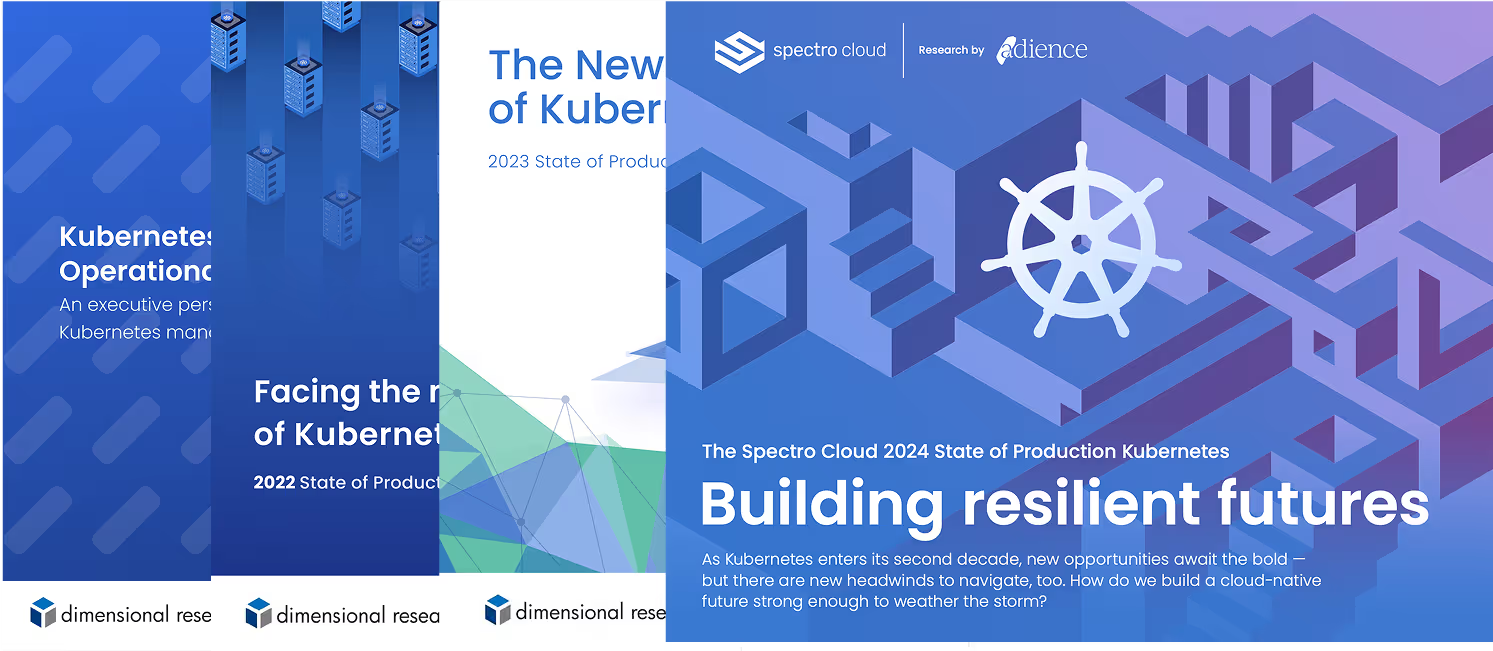State of Production Kubernetes 2025
455 engineers, architects & execs reveal how AI, edge and VM orchestration are shaping real-world K8s at scale.
.avif)

Five years of trusted insight
Nearly 1,700 voices captured since 2021. The State of Production Kubernetes is the longest-running, most credible research report into how enterprises use K8s in reality.
Data you can trust:
Statistically rigorous: robust large-scale survey by independent researchers, 455 respondents, sample controlled.
Insight, not just data: 6x deep-dive interviews with K8s users like you, from CIOs to platform engineers.
No filler: we surveyed enterprise and pubsec production users only: no students, SMBs or homelabs to distort the data.

.avif)
Research that matters to you
Kubernetes moves at break-neck speed, and hype often drowns out hard facts. The State of Production Kubernetes report cuts through that noise with five years of independent, vendor-neutral data.
Because we ask the same core questions every year — while adding new ones for emerging trends — you get a continuous benchmark that shows not just what’s hot right now, but how real-world adoption is changing over time.
Our goal: to give you actionable yardsticks you can measure your own platform against — to guide decisions, brief executives, and benchmark best practices in a landscape that’s anything but stable.
.avif)
What’s inside
Enterprises already run >20 clusters and >1,000 nodes, across five-plus clouds and environments, driven by multicloud, repatriation and AI imperatives. The consequence? Cost is the biggest pain across the board.
AI has become Kubernetes’ centre of gravity. 90% of teams expect their AI workloads on K8s to grow in the next 12 months, the strongest signal in the entire survey. That demand is steering clusters to GPU clouds and, critically, to the edge, where half of adopters now run production K8s.
68% already run the majority of their app estate on K8s, and legacy apps aren’t being left behind. 31% are betting on KubeVirt to rehome their VMs in their clusters. 26% already use it in production.
Maturity is up, but operational excellence isn’t guaranteed. Four in five claim a mature platform-engineering function, yet >50% admit their clusters are “snowflakes” and highly manual. Teams that centralise release pipelines under a platform team score best across all DORA metrics.
Our new persona model helps you benchmark. The data clusters organizations into K8s Factories, Mid-Scale Builders, Modernizing Learners and Old-School Statics, each with distinct scale, environment mix, DORA performance and pain points.
The report is packed with data, recommendations, predictions and much more. Unlock the full PDF now to get full access to all the insights.
LIVE deep dive webinar
Join us on September 11 for a fast-paced, 45-min Deep-Dive into all the key findings that matter to you.
From AI hype to K8s reality: unpacking the top cloud-native trends in 2025.
.avif)






.avif)
